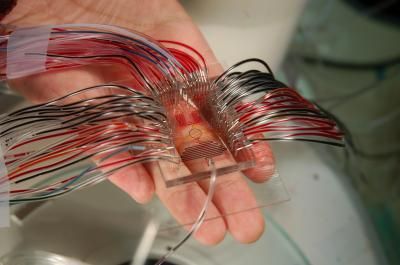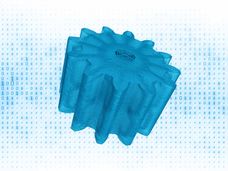Tularik Acquires Virtual Drug Screening Technology from U.K.’s Protherics
drug screening Technology from U.K.’s Protherics
Adding "Virtual" to Existing "Physical" High-Throughput Screening Capabilities Is Expected to Boost the Number and Quality of Drug Leads
South San Francisco, Calif., July 12, 2001 -- Tularik (Nasdaq: TLRK) announced today that it acquired the computer-aided molecular design (CAMD) unit of Protherics PLC, a U.K.-based company.
David V. Goeddel, Ph.D., Tularik’s CEO, said the acquisition, which includes proprietary virtual molecular screening software as well as a team of software designers, computational chemists and medicinal chemists, promises to enhance Tularik’s drug discovery efforts. "We will integrate Protherics’ virtual screening capability with our own well established high-throughput screening. This will help us boost both the number and quality of leads for Tularik’s proprietary targets--targets we have already validated as optimal points for intervention in important disease pathways," Dr. Goeddel said.
The key technology of the Protherics’ CAMD unit is a set of proprietary computational software tools called Prometheus. These tools facilitate the identification of novel compounds that bind with high affinity to the active site of cellular receptors or enzymes. The technology also enables the rapid optimization of early drug leads by combining structural information about drug targets with virtual screening information gleaned from compound libraries designed around particular sets of chemical leads.
According to Juan Jaen, Ph.D., Tularik’s Vice President, Chemistry, Tularik conducted a comprehensive survey of CAMD software packages for virtual screening, and Prometheus best fulfilled Tularik’s needs. Prometheus has been applied with great success to the design of inhibitors for various proteases involved in blood clot formation, allergy, and inflammation. More broadly, Prometheus is applicable to any protein target for which 3-dimensional structural information is available.
"Rapid, cost-effective identification and optimization of lead compounds is crucial in the drug discovery process," said Dr. Jaen. "What CAMD brings to Tularik is a very effective application of high-speed computational methods to molecular design and screening."
"At the same time, it’s important to understand that virtual screening doesn’t replace, but rather complements, ‘physical’ high-throughput screening," Dr. Jaen continued. "What the software and high-speed computers enable us to do is select a moderate number of potentially active compounds from existing commercial compound libraries or from Tularik’s proprietary virtual libraries. Through an iterative process, the technology then enables us to distinguish potent molecules from inactive or less potent ones, with greater and greater levels of precision."
"Just as important as identifying an early lead--whether it is from standard high-throughput screening or computational methods--is the ability to quickly optimize the drug-like properties of the molecule," commented Nigel Walker, Ph.D., Tularik’s Director, Structural Biology. "The CAMD approach is uniquely suited to accomplish efficient optimization by making full use of the range of information generated by Tularik’s structural biology group."
"Ultimately, of course, actual compounds need to be synthesized, tested, and optimized by our expert team of medicinal chemists from both Tularik and the new CAMD group," Dr. Walker added. "In short, it’s the synergy and complementarity between the ‘virtual’ and the ‘physical’ approaches that appeals to us and makes us look forward to the application of the CAMD technology to our discovery efforts."















































